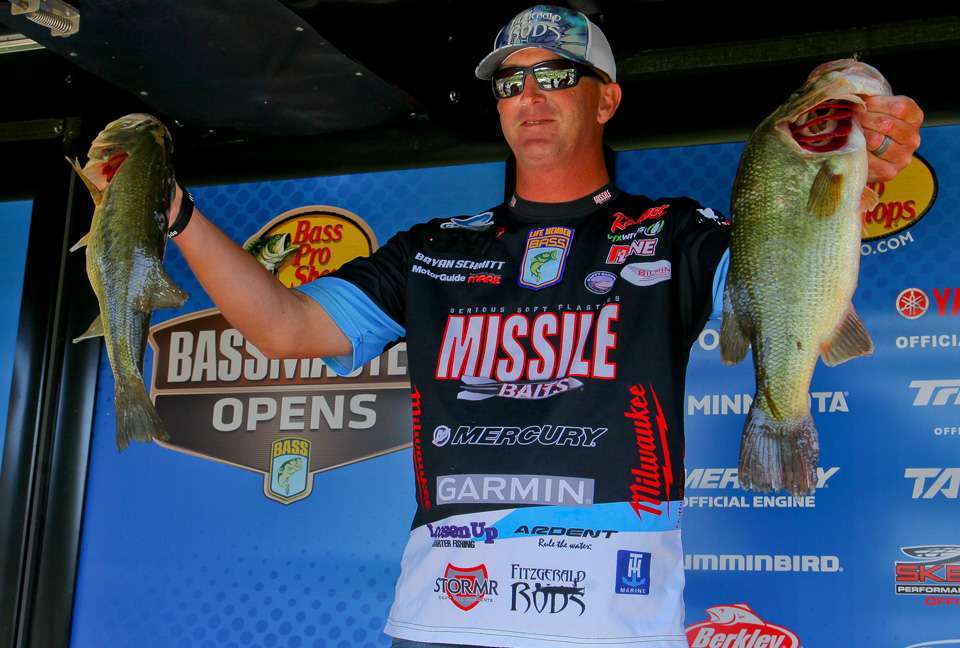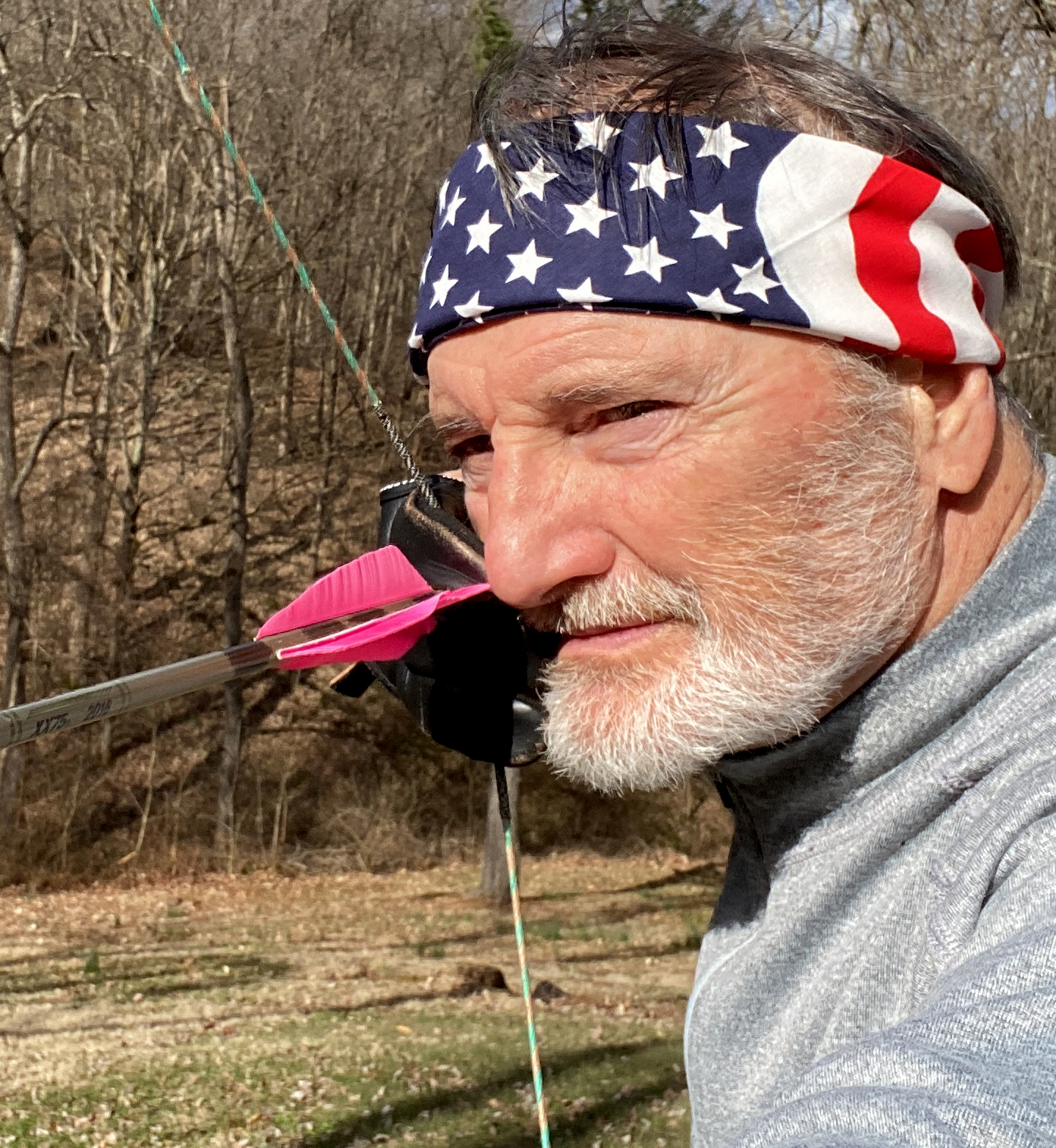
Maryland angler Bryan Schmitt rarely spends an entire day without being aboard some type of fishing vessel. When he wasn’t competing in a Bassmaster Eastern Open or an FLW Tour event during the 2019 season, Schmitt was running a charter boat on the lower Chesapeake Bay for saltwater stripers.
Schmitt’s father-in-law, Frank Carver, started the charter business roughly 35 years ago. Together they run 400 trips a year with two boats that measure 42 and 50 feet in length. During the summer months, Schmitt’s wife Ashleigh, who is a teacher for high school special needs students, and his 6-year-old son, Dylan, sometimes join him on charter trips.
“Running a charter boat for stripers is critical to my success as a bass fisherman,” Schmitt said. “I have to deal with changing conditions every day to figure out how to catch the stripers. That keeps me sharp for bass fishing.
“A good year with the charter business pays the bills. A good year bass fishing also pays the bills. If both businesses go well, we can maybe save a dollar or two.”
It appears that Schmitt was able to save more than a dollar or two in 2019. He finished first in the Bassmaster Eastern Opens AOY standings and pocketed more than $40,000 doing so. He also finished 22nd in the FLW Tour AOY race, which added to his winnings. He earned the right to be a Bassmaster Elite Series angler for the 2020 season.
“It’s awesome to have qualified for the Elite Series and the FLW Tour,” Schmitt said.
Schmitt’s love for fishing began at a cabin that his great, great grandfather Poppa Cameron built on the shore of a remote lake in Ontario. The cabin initially served as a church. It became a vacation home that has been passed down through the generations.
“I was in diapers the first time I went there,” Schmitt said. “The cool thing about that cabin is you have to get there by boat. There’s no electricity or running water. It’s like going back in time.”
While vacationing at the cabin, Schmitt’s family fished for panfish and smallmouth and largemouth bass. They usually cast nightcrawlers while drifting from a runabout. By the time Schmitt was 8 he had begun fishing with artificial lures for bass, mainly Mepps spinners and a jointed Rapala. Schmitt’s bass addiction was set in stone one evening while fishing with his father, Gary, and uncle Jack Greve.
“We went back into a cove and I cast the Rapala next to some lily pads,” Schmitt said. “Something sucked down the Rapala and peeled line off my reel. Then a giant largemouth came up and tailwalked across the water before it got away. It might have been only a 3- or 4-pound bass, but it was the biggest thing I had ever seen on that lake. From then on I was hooked.”
Around age 15 Schmitt got the bug to fish bass tournaments. He started reading Bassmaster Magazine and watching Bassmaster television shows. He was amazed that people could make a living by fishing tournaments.
His first boat was a 10-foot inflatable that he rigged with an electric motor. Schmitt soon stepped up to an aluminum johnboat, which was also powered by an electric motor. He launched the boat at small ponds and began catching bass with the lures and techniques he had been reading about.
“When I got that johnboat I felt like I had made it and that I knew what I was doing,” Schmitt said.
When he was 18 Schmitt and Ashleigh, who was then his girlfriend, went to an annual fishing expo in Timonium, Md. He was too shy to talk to any of the fishermen in the booths. He noticed a flier on table advertising an open tournament on the Potomac River.
“I told Ashleigh I was going to fish that tournament out of my little johnboat,” Schmitt said. “I called the number the next day and talked to Joseph Scalley. He told me that my boat had to have a livewell and all kinds of other stuff I’d never heard of.”
Spalley was a member of the Maryland Tri County Hawg Hunters, a B.A.S.S. Nation affiliated club. He invited Schmitt to come to one of the club’s meetings. Schmitt accepted the invitation and was soon a member of the club. He bought a 16-foot Cajun bass boat powered by a 115 hp Johnson so he could compete in the tournaments.
“I bought the boat for $2,000, but it ended up costing $15,000 to get it operational,” Schmitt said.
Schmitt’s first club tournament was on the Choptank River, a tidal fishery. He had never been there and spent the day running around and unsuccessfully trying to catch a bass. His last stop was a log that he saw barely sticking out of the water.
“I caught my limit off that log and got the biggest bass of the tournament,” Schmitt said. “I wound up winning the event and pocketing $500. It was pure luck, but I was convinced I had become a professional.”
For the next five or six years Schmitt fished the club’s tournaments and qualified to compete in state level events. He began fishing BFL tournaments when he was 23 and won a few of them.
“Then I fished the Costas and won a few of those.” Schmitt said. “It blossomed to the FLW Tour and the Bassmaster Opens and here I am today.”

